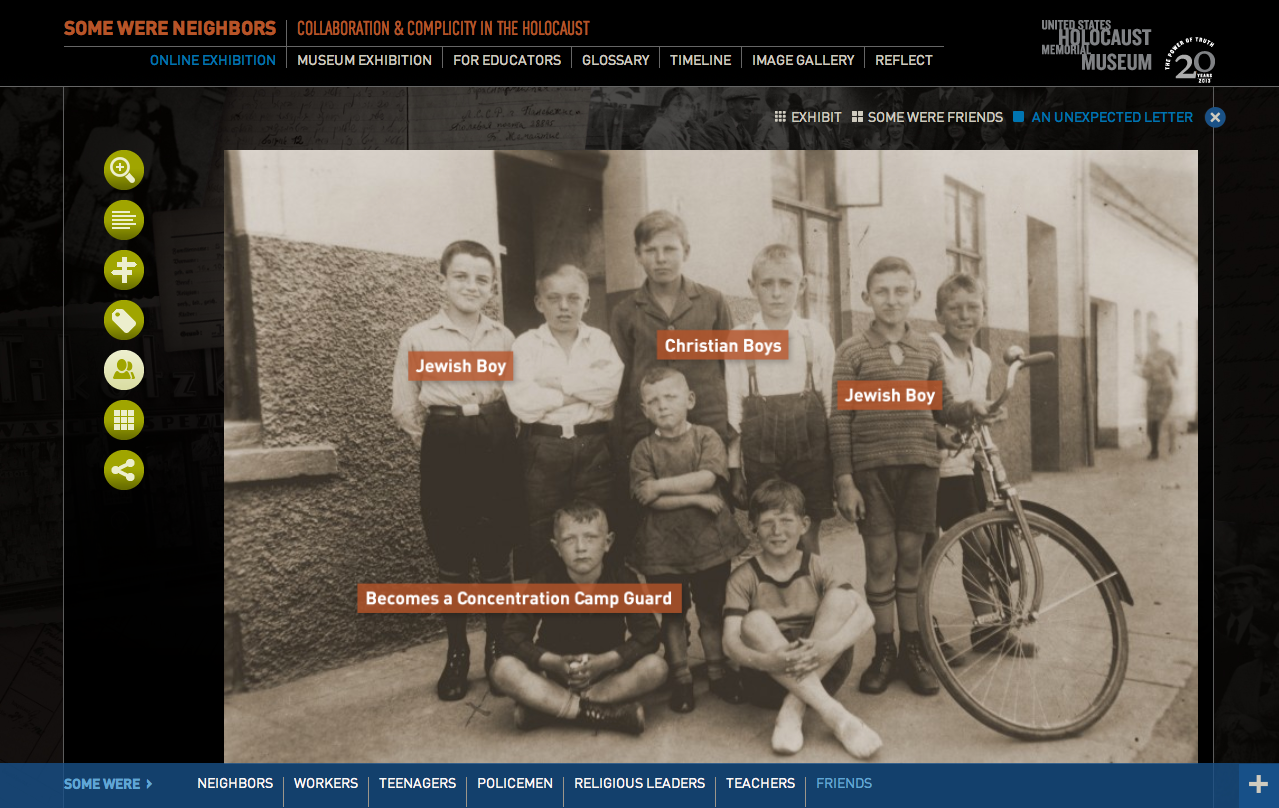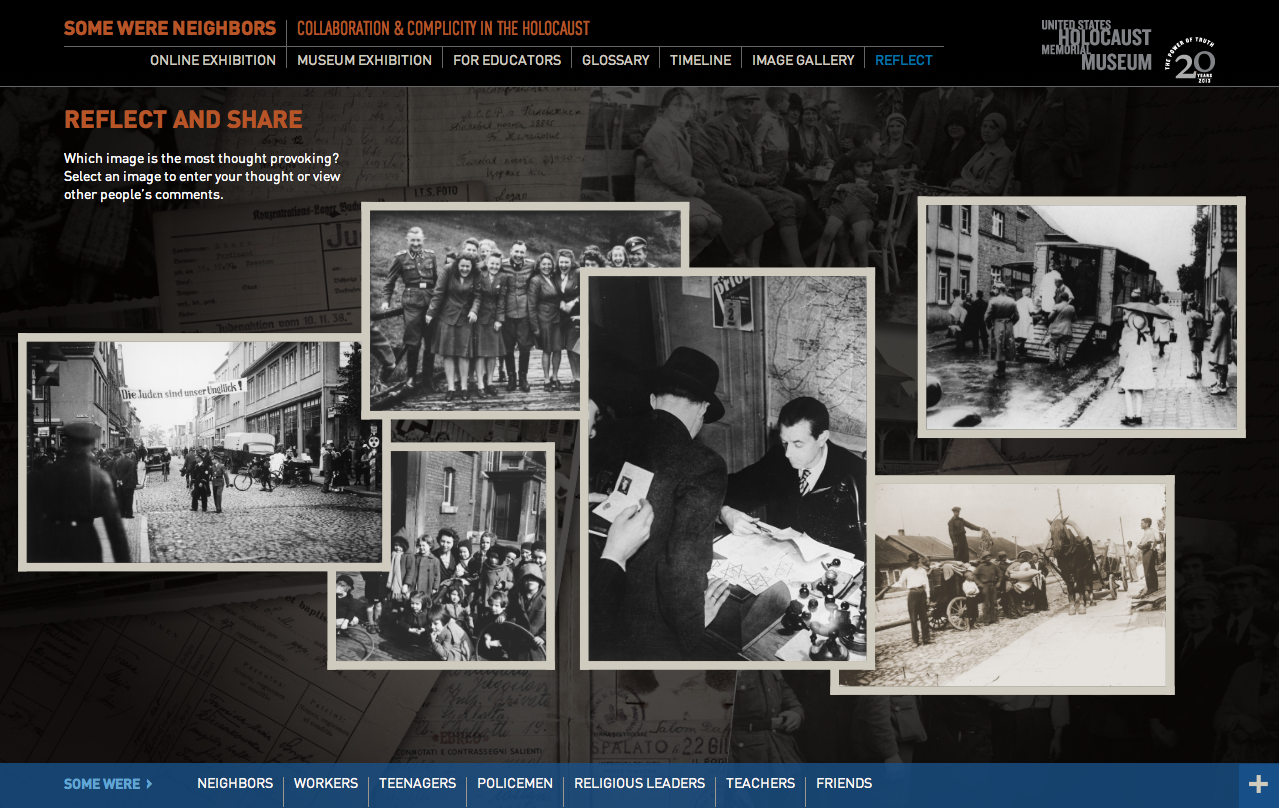How was the Holocaust possible? A website and on-site interactive exploring the social responsibility of bystanders to genocide.










How was the Holocaust possible? Across Europe, the Nazis found countless willing helpers who collaborated or were complicit in their crimes. What motives and pressures led so many individuals to abandon their fellow human beings? This website created for the United States Holocaust Memorial Museum uses seven ordinary roles—neighbor, worker, teenager, policeman, religious leader, teacher, and friend—as lenses to examine complex factors influencing behaviors in the context of genocide. Via period film footage, eyewitness testimonies, and artifacts from the Museum’s collections, the site highlights physical evidence of the involvement of average people in mass murder. Video and photo treatments direct the visitor’s eye to people standing on the margins and raise questions about morality and social responsibility. The site offers avenues for active visitor engagement such as photo tagging and a chance to submit thoughts about specific historical images. The latter activity links directly to kiosks in a special companion exhibition at the Holocaust Museum in Washington, DC, merging on-site and online visitor submissions to create a unified “community of reflection.”
![C&G Partners [logo]](https://www.cgpartnersllc.com/wp-content/uploads/2025/09/CGP20_black_orange_RGB.png)
